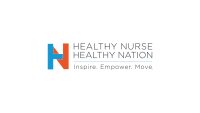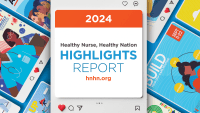In 2010, the President’s Cancer Panel, a three-member advisory panel that monitors the National Cancer Program and reports to the president on that program’s activities, issued its report, “Reducing Environmental Cancer Risk: What We Can Do Now.” The first presidential report to associate environmental causes with cancer, it identified two issues that show the reality the country faces concerning environmental health:
- Many sources, types, and magnitudes of existing and anticipated environmental contaminants have already been identified.
- The country is largely unprotected from preventable exposures because federal regulations are incomplete and outdated.
Sources and types of environmental contaminants
The panel advised President Obama to “use the power of your office to remove the carcinogens and other toxins from our food, water, and air.” Carcinogens are cancer-causing agents present in soil, air, water, and numerous consumer products and have been identified through numerous studies on environmental and occupational exposures. The President’s Panel Report found that lower-income populations are more likely to work in occupations with higher levels of carcinogen exposure and to live in more highly contaminated communities. According to the report, almost half the American population (41%) will develop cancer during their lifetime and 21% will die of the disease.
The report stated that environmental hazards may become more visible as a result of increased economic development. Industry and other businesses (such as agriculture, medicine, and military), as well as products and processes, are responsible for many of the hazardous occupational and environmental exposures Americans experience. With the constant demand for more effective and efficient ways of manufacturing, new chemicals and other substances are being produced, developed, and used. Many of these contaminants—some banned more than 30 years ago—remain in the environment.
The report notes that children are more vulnerable to environmental carcinogens due to their small body mass and rapid growth. Thus, it is important to select food, housing, backyard products, playing spaces, toys, and medicines that reduce children’s contact with toxic chemicals. The use of cell phones among children is increasing the risk. Studies on ionizing radiation by Martha Linet, MD, MPH, at the National Cancer Institute have shown that children are the most sensitive population group in terms of carcinogenic exposure to ionizing radiation. Children also are exposed to radon, asbestos, and lead in their homes, schools, and day-care centers. Bisphenol A (BPA) remains unregulated in most U.S. states and at the federal level and is one of the chemicals most present in consumer products. Suspected of triggering several diseases and cancers, BPA is among the 80,000+ chemicals that are either unregulated or understudied at the national level.
Inefficiency of federal regulations
Failure of the United States to develop an efficient plan to protect citizens against environmental health contaminants derives from five major issues—(1) inadequate funding and insufficient staffing, (2) fragmented and overlapping authorities coupled with uneven and decentralized enforcement, (3) excessive regulatory complexity, (4) weak laws and regulations, and (5) undue industry influence. These problems allow avoidable exposures to known or suspected cancer-causing and cancer-promoting agents to continue and proliferate in the workplace and community.
ANA recommends conducting scientific research to enhance understanding and our ability to prevent and respond to environmental carcinogens, enforcing existing policies and regulations that protect workers and the public, implementing policy and regulatory changes that support public health and reduce the burden of cancer, and taking personal action. Nurses can influence and transform public policy by letting policymakers know of the need and support for environmental cancer research. ANA urges nurses to show their support for regulatory measures to reduce or remove from the environment known or suspected carcinogens. Additionally, the government needs to support “green” chemistry initiatives and increase research on organic food and “green” industry. Nurses should consider patient exposure in the workplace and home environment when taking medical histories. Cancer-risk assessment also is needed because of the lack of data on healthcare workers’ occupational exposure.
ANA believes new products and chemicals must be well-studied both before and after their introduction to the market to ensure safety. Environmental exposure to cancer-causing chemicals can be decreased through thorough research and updated regulation.
José V. Cárdenas is a senior policy fellow at ANA.

















